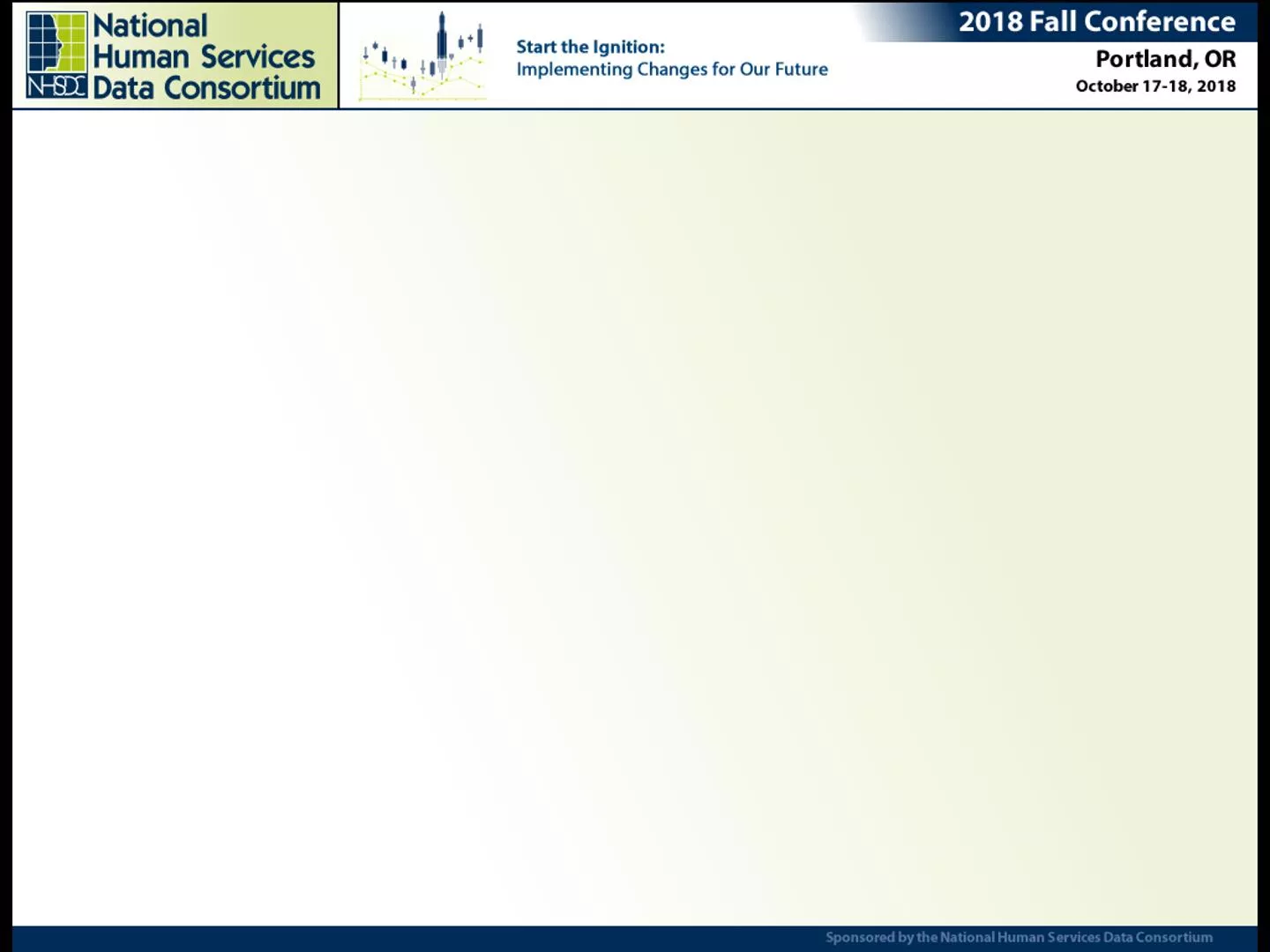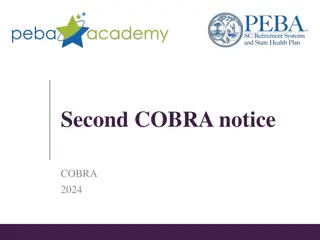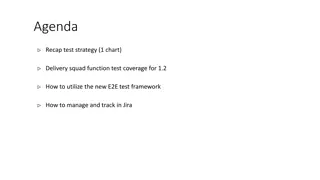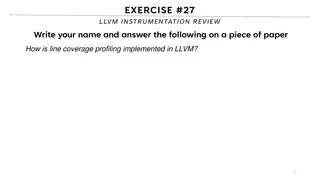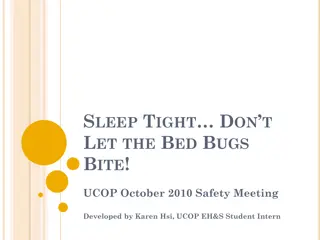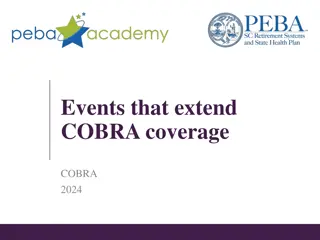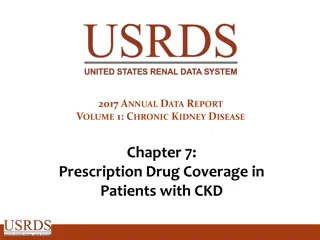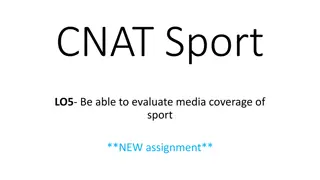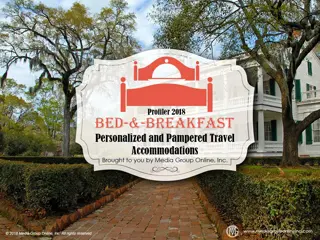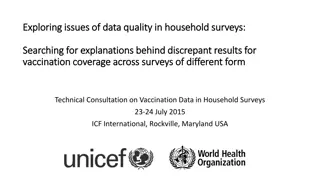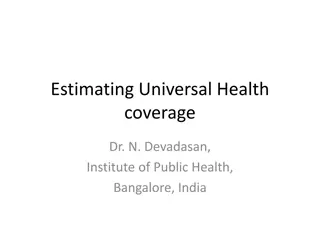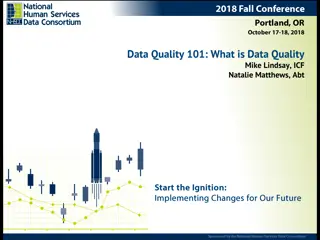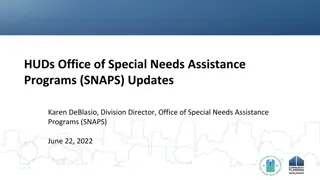SNAPS Data Strategy and Bed Coverage
Explore SNAPS Data Strategy focusing on bed coverage, core elements, metrics, and strategies to improve data quality. Learn about HMIS participation, community examples, and goals for achieving quality data in homeless services within 3.5 years.
Download Presentation

Please find below an Image/Link to download the presentation.
The content on the website is provided AS IS for your information and personal use only. It may not be sold, licensed, or shared on other websites without obtaining consent from the author. Download presentation by click this link. If you encounter any issues during the download, it is possible that the publisher has removed the file from their server.
E N D
Presentation Transcript
Understanding SNAPS Data Strategy and relationship to Bed Coverage Understand the core elements, definitions, and metrics of bed coverage Review strategies to increase bed coverage in a meaningful way Discuss the connection between bed coverage and all other components of data quality
SNAPS Data Strategy Discussion HMIS Participation Strategies Community Examples
The Office of Special Needs Assistance Programs (SNAPS) has defined a set of goals it believes represent where the field and Federal government can be in 3 5 years. Every CoC should consider the following: How closely their CoC/HMIS implementation is to achieving the vision and strategies If these federal priorities align with their local efforts Barriers they may be facing to implement the vision and strategies
Communities use their data to optimize systems of care through making ongoing system performance improvements and determining optimal resource allocation
Communities operate data systems that allow for accurate, comprehensive, and timely data collection, usage, and reporting Key Characteristic Bed Coverage across CoC (funded and unfunded)
Majority of CoCs in 3 5 years Goals for Quality Data 100% of ALL homeless providers contribute data to HMIS
Advanced CoCs in 3 5 years Goals for Quality Data 100% homeless providers and non- homeless providers contribute to shared data environment
Federal government coordinates to receive and use data to make informed decisions in coordination with other data sets, across and within agencies.
Low HMIS Bed Coverage prevents many communities from understanding the true nature and extent of homelessness Prevents accurate Federal, State, and Local Reporting Prevents the development of a data informed decision making culture
Clients can get lost in the homeless services system If the community is using HMIS for Coordinated Entry, low bed coverage could have a significant effect on inactivity for the purposes of CE Difficult to look at overall client movement through the system and system effectiveness
HMIS bed coverage rate refers to the proportion of beds in a community that participate in HMIS. The HMIS bed coverage rate is equal to the total number of HMIS- participating beds divided by the total number of beds in a community.
Lack of agency resources Staffing Too few, too little time Limited computer skills Shelter may be dependent on homeless volunteers Don t see the need for HMIS (management/staff) Technology Few computers, may not be adequate for HMIS Limited access to internet Existing HMIS software may not be adequate for high volume, high turnover shelters
Many housing programs are not required to participate in HMIS and choose not to participate. Secular organizations with limited resources Faith Based Organizations (FBOs) Rescue Missions affiliated with the Association of Gospel Rescue Missions (AGRM): AGRM has about 300 member Missions About 70% of these Missions accept no federal funding They provide an estimated 11% of ES and TH beds nationwide Often satisfied with Mission focused software (about 100 Missions) Non-affiliated Missions Other FBOs
Many housing programs are not required to participate in HMIS and choose not to participate. Section 8 vouchers with a homelessness preference / eligibility HUD-VASH vouchers Transitional Housing beds not CoC-funded Locally-funded rapid rehousing and other permanent housing projects
For many communities, increased HMIS bed coverage will not be possible until: Difficult, high volume, high turnover shelters with limited resources can be successfully integrated into HMIS, and The community commits to engaging faith based organizations often the primary providers of Emergency Shelter as full partners in HMIS
For many communities, increased HMIS bed coverage will not be possible until: Clients served with HUD-VASH vouchers are entered into the system State and local funders understand the benefits of HMIS and encourage / require their grantees to use the system
Faith-based organizations have different reasons for gathering data: Ideas of success Long range goals Funding Accountability models (internal and external) Interfaith/community partnerships Denominational viewpoints (Why do they help people?) Understanding the realities of faith based partnerships is critical for success every situation is unique
Why join a community information system / HMIS? Modifiable and Scalable Systems Information and Resource Sharing Funding Leveraging Collaboration among Service Providers
Practice relationship building Assist with infrastructure creation within faith-based community Offer financial incentives Adapt processes to specific agency needs Gain support and insight from colleagues
Involve non-HMIS participating homeless service providers in the overall CoC process and ask them to share their expertise / knowledge Educate state and local funders about HMIS Provide data / reports / dashboards from HMIS of interest to non-HMIS participating entities
Encourage more participation by reducing HMIS administrative overhead Make HMIS easier Simplify check-in/check-out process in high volume, high turnover emergency shelters. Reduce need for staff computer and keyboard skills Run check-in without internet access or HMIS passwords Reduce/eliminate the need for duplicate data entry Provide useful benefits in return for HMIS participation Use HMIS to replace existing, manual reports Provide timely, accurate reporting for donors Document program performance and outcomes
Ongoing conversation / showing the benefit to the community / clients served Assisted with data entry into HMIS through an Agreement with another Agency Discussed transitioning data entry in-house once the process began
Working to simplify / replicate current internal processes Edited HMIS documents to meet Rescue Mission needs Ongoing conversations / relationship-building
CoC Leadership emphasized importance of HMIS data and encouraged funders to require the use of HMIS for locally-funded permanent housing Agencies with the local funding already used HMIS easier lift
Education, education, education Seasonal shelter beds important for the CoC s coverage CoC Leadership support / encouragement
Largest provider of ES and TH beds within the CoC Invited Rescue Mission leadership to join the CoC Executive Committee Find connections between Rescue Mission and other parts of the homeless services system
HUD-VASH leadership involved in the CoC Executive Committee Worked through HMIS documents to meet VA needs Trained staff on HMIS data entry, and provide ongoing training / technical support
Alissa Parrish, alissa.parrish@icalliances.org Mike Lindsay, Michael.Lindsay@icf.com




